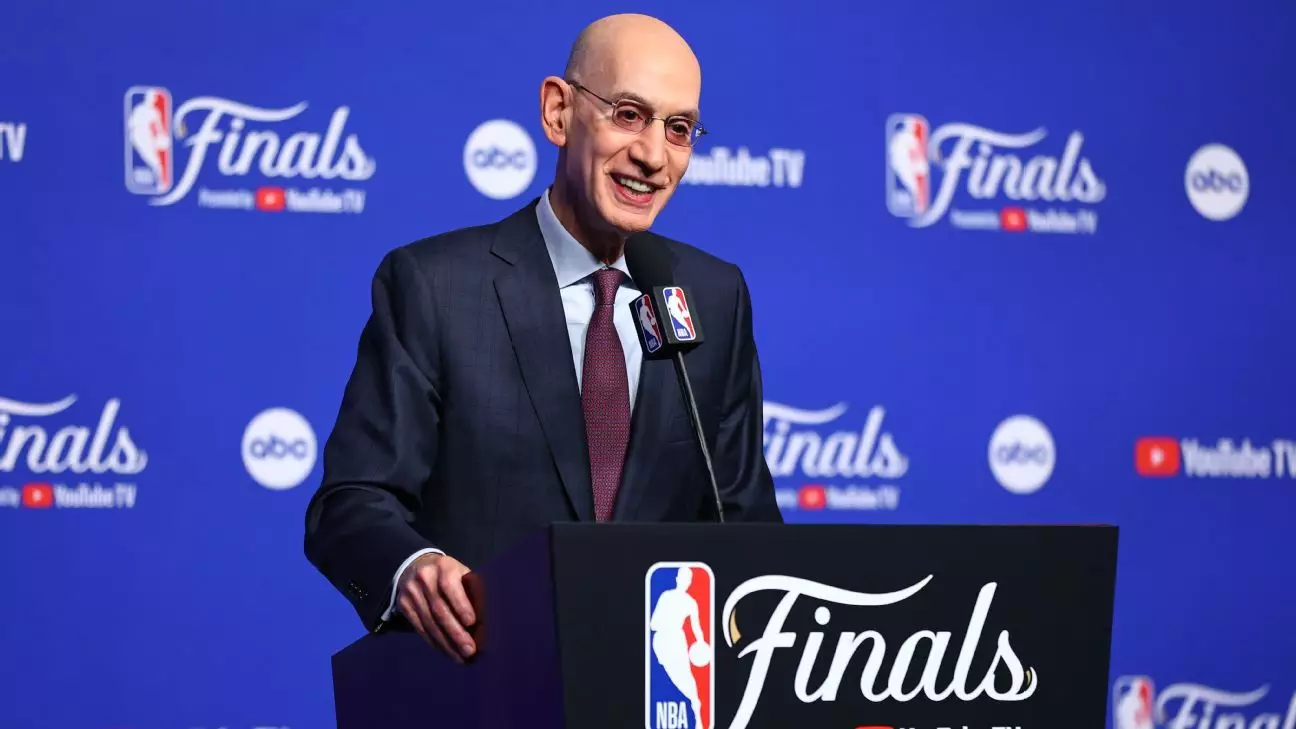The NBA, under the leadership of Commissioner Adam Silver, is stirring speculation among basketball fans and potential markets as discussions about league expansion surface. Silver recently announced that the upcoming board of governors meeting in Las Vegas would include expansion on the agenda for the first time in a formal context, prompting a wave of eagerness and inquiry about where this monumental repositioning might lead. The prospect of adding new teams to the NBA landscape not only tantalizes fans in prospective cities but also poses a significant opportunity for the league to explore underserved markets.
The last expansion in 2004, which welcomed the Charlotte Bobcats to the NBA, reminds us that the league has not indulged in growth for almost two decades. As the basketball world shifts with time, the NBA is increasingly recognizing the latent demand for franchises in cities like Seattle and Las Vegas, both of which have shown robust fan enthusiasm and economic potential for a new team. Silver’s intention to gauge the “temperature of the room” at the meeting implies that careful thought will be applied to this decision, ensuring that it aligns with the long-term growth strategy of the league. While the topic is rife with excitement, the commissioner is candid about the fact that expansion is not a foregone conclusion; rather, it is a necessary conversation driven by demand and opportunity.
The Economics of Expansion
Alluding to the financial implications of expansion, Silver postulates that inviting new teams into the fold entails “selling equity” in the league itself. This highlights a critical aspect of the NBA’s evaluation: the net positive impact of new franchises must outweigh the dilution of existing team value. The economic landscape of professional sports showcases a delicate balance; the introduction of new teams can enhance revenue streams through media rights, merchandise sales, and ticket purchases, yet it simultaneously means splitting profits among a larger group of stakeholders.
The resurgence of interest in league expansion also speaks to a larger narrative of inclusion across the United States. Cities that have been historically ignored from the professional basketball map now have an opportunity to potentially welcome teams into their communities, which could stimulate local economies and foster a renewed sense of community pride. As Silver recognizes, there are indeed markets that deserve a chance at NBA representation, an acknowledgment that transcends merely expanding the league’s geographical footprint.
Parity and Change in Competitive Landscape
In conjunction with the topic of expansion, Silver shed light on another pertinent aspect of the NBA’s future: the dynamic of competitive parity. This year’s Finals will see a new champion crowned, marking the seventh consecutive titleholder. Some observers attribute this phenomenon to the changes made in the collective bargaining agreement aimed at leveling the playing field. Yet, Silver makes it clear that the pursuit of parity is not solely about creating different champions for the sake of variety.
The objective is rooted in creating equitable opportunities for franchises to succeed on the court. Should an established powerhouse maintain dominance due to better management or talent acquisition, it does not inherently negate the validity of the current operational model; rather, it validates the complexities of building competitive teams. Silver’s stance emphasizes a systems-oriented perspective on league mechanics, one that sways the spotlight away from outcomes to focus on processes and strategies.
Innovating the All-Star Experience
Another aspect meriting attention is the forthcoming transformation of the NBA All-Star Game. With Silver hinting at a potential “Team USA vs. the World” format akin to changes seen in the NHL, there is strong anticipation for a fresh take on this celebrated event. Silver’s acknowledgment that international players constitute a significant portion of the league adds depth to the concept of fostering a competitive spirit that celebrates global talent, rather than a simple nationalistic rivalry.
The timing of the All-Star Game is also strategically crafted, falling closely after the Winter Olympics. This connection primes the event for maximizing viewership while capitalizing on the prevailing Olympic fervor. As the NBA transitions to NBC for its All-Star coverage, the league demonstrates a keen awareness of how media partnerships can leverage major sporting events to create a more engaged fan base.
Resisting the Move to Shorten Seasons
Despite ongoing discussions surrounding potential changes to the league structure, Silver firmly dismissed notions of reducing the regular season from 82 games. The commissioner articulated that such a shift wouldn’t be economically viable and lacks compelling evidence to support claims regarding injury reduction. This perspective reveals a deeper insight into the NBA’s commitment to tradition and revenue generation while challenging existing notions about player health and performance within the framework of a long season.
As exciting possibilities emerge and the NBA potentially embarks on a new chapter, the dialogue surrounding expansion encapsulates more than just numbers and game schedules. It is a conversation about community, economics, and the future of professional basketball; a narrative as dynamic as the game itself.


Leave a Reply